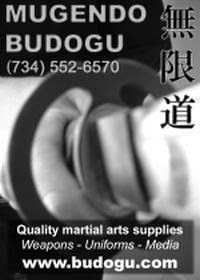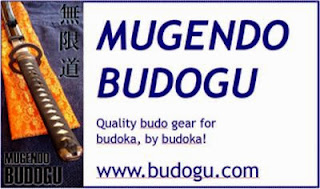 |
| Photo Copyright Girgoris Miliaresis 2014 |
Nearly everyone in the gendai (modern) budo world talks about taking ukemi (receiving a technique), and being uke. Real ukemi is not something you take, and uke (one who receives a technique) is not a passive existence. The character in both “ukemi” and “uke” is “受け” “to receive or incur”. Being uke is really about receiving your partner’s technique and how you absorb it, and it is a very active role. There is nothing passive about it.
Gendai budoka, be they judoka, jujutsuka, aikidoka, or any other group, will say that they “take ukemi.” What they really mean is that they put their body out there for a partner to apply a technique to without offering resistance. The only time resistance shows up is during whatever sort of randori training their group does. Their ukemi is passive, and their job as an uke is to present no difficulty or opposition to their partner. The only real requirement for the job is that you be skilled enough to survive whatever technique is being practiced.
The real depth of the role of uke becomes clear when you look at the structure of uke’s role in koryu budo, or classical Japanese arts. The teacher, or other high level senior, takes the role of uke. They are actively engaged in what is going on, not just passively “taking ukemi.” In all of these precursors to the various gendai budo, uke’s role is considered critically important, and a beginner cannot understand what is required of a good uke.
 |
| Photo Copyright Peter Boylan 2019 |
This is true whether what is being practiced is some sort of empty-hand jujutsu or even if weapons are involved. My students know that if they leave too big an opening during an attack that my sword will fill it, stopping their attack and showing them their weakness. It’s not me showing off. The trick is judging when the kata is broken and attacking an opening. Students are learning, so of course they leave openings. I’m constantly calibrating my responses for individual students. Someone learning a new kata gets a lot of leeway to make mistakes while they learn movements. The same student practicing something they should know well doesn’t get much room for mistakes at all. If they were practicing with someone who wasn’t already skilled in the art, they would end up practicing all sorts of incorrect movements, spacing, and timing, embedding these mistakes in their bodies.

Collected Essays of the Budo Bum
For uke, there is also the challenge of receiving attacks properly. Uke isn’t passively accepting whatever the student does to them. Uke is trying to receive the technique in the best way possible from a martial perspective. If uke is just going along with whatever the student does, uke is teaching themselves to move in ways that aren’t optimal for receiving such an attack. Uke has to be able to move in such a way that they receive the energy of the attack in a manner that is safe and gives them the best opportunity to counterattack.
It’s not enough to just receive an attack in such a way that it doesn’t immediately end the encounter. If your receiving technique simply sets you up for a different finishing technique, it’s not effective ukemi. It’s a failure. Good ukemi should move uke to a position where she can counterattack or break off the encounter. Even in kata practice, there should always be a tension between uke trying to successfully attack tori, and tori trying to eliminate the possibility for the uke to attack. Uke has to learn to move not just to receive the attack, but to the most advantageous position to receive the attack. As long as it is possible, uke’s movement should put her in a strong place to both defend, and to launch another attack. Tori’s job is to close all of uke’s options until uke is defeated.
Throughout a kata, uke should be seeking opportunities to attack. This seems obvious, but I see lots of kata being done where uke makes an initial attack, and after that they only attack the most obvious of openings. This is where a kata can come to life. If the kata is well designed, when done correctly there is only one optimal movement for uke in each situation. When tori does their part correctly, uke’s options are constricted so the best choice may well be limited to one thing. If uke is participating in the kata with the intent of continuously attacking tori, they will attack into any opening tori leaves.

The Budo Bum gets interviewed and answers tough questions.
Uke isn’t breaking the kata when she does this. Tori breaks the kata when she leaves the opening for uke to attack. It is this interplay that makes kata live. If uke is just going through the motions, then tori isn’t going to learn much. If uke is seeking those openings that tori leaves and filling them with attacks, tori quickly learns to close those openings.
Uke isn’t there to receive an attack. Uke is there to teach tori how to move and act without leaving openings that an opponent can exploit. Receiving an attack is the smallest part of the job.
Special thanks to Deborah Klens-Bigman, PhD. for editorial guidance and support.










